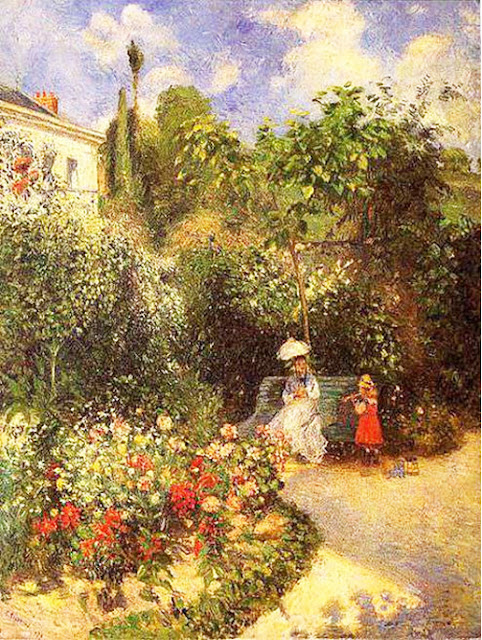 |
| The Lake of Enghien-les-Bains - Photo by ANTON PRIMA |
Snapshots from Paris and elsewhere (Part II)
By ANTON PRIMAAngeles City
Pampanga
JUST LIKE most of the foreign students, I subsisted in a 12-square meter top story cubicle with no heating systems in the luxurious intramural City of Paris for seven years!
Those minuscule cells used to be the rooms provided for the house helpers working in the posh apartments in the lower floors. When in-house domestic helpers became unaffordable for many Parisians, these cubicles were rented out to mostly young people with tight budget.
So, immediately after having found a more decent paying job, and having already explored enough the charming banlieus around the city, I finally moved out and settled in a quieter picturesque lake town of Enghien-les-Bains.
It was a laid back town that the residents have preserved the charm of an old French village with its rich cultural traditions, but at the same time embracing modernity with youthful enthusiasm.
The lake is the host to the annual regatta where European Grands Écoles (literally "great schools") compete and usually participated in by Cambridge and Oxford from UK, among others.
Enghien-les-Bains and its neighboring towns for me was love at first sight even before knowing too well that it was, and still is, a famous spa resort and considered as a well-to-do suburb of Paris, developed in the nineteenth century around the scenic lake of Lac d'Enghien.
The only casino in Paris is located on the shores of the lake with its modern big theater that regularly features concerts of the world renowned classical and contemporary artists.
Most often, artists "testing the waters" would have the pre-Paris performance in Enghien where critics and media would have the initial impression of the events.
Usually, if the Enghien audience was enthralled, then it would most certainly be a big hit in Paris. My constant presence in those performances had surely elevated my taste and appreciation for classical music.
However, to put the records straight, in the first second year of my stay there, I actually lived in the quaint village of Montmorency on top of the hill overlooking the lake. Montmorency, in itself, was the fief of the Montmorency family, one of the oldest and most distinguished families of the French nobility. It is now a wealthy suburb of Paris.
It took me couple of years to find my dream appartement, the one which is just a stone-throw away from the lake at the back of the resort spa of the town.
The promontory walk and the Casino at the back. (Photo from Wikimedia Commons.)
The name Enghien-les-Bains literally means "Enghien Spa", which actually refers to the thermal baths for which Enghien-les-Bains is famous. The suffix "Les Bains" was added to differentiate it from the place in Belgium called Enghien.
Where I lived in France until my definite return to the Philippines was in the northern suburbs about 13 kilometers from the centre of Paris, in the Département of Val-d'Oise. It is named after the Oise River, one of the major tributaries of the Seine, which crosses the region.
Conflans-Sainte-Honorine, named for its geographic position at the confluence of the Seine and Oise rivers. (Photo by Anton Prima)
Val-d'Oise is not only known as having the towns of Enghien-les-Bains and Montmorency. It is a place of pilgrimage for people who are keen on "impressionism". Many painters lived in the scenic towns of Val-d'Oise, most specially in Pontoise and Auvers-sur-Oise. They are associated with several famous artists, the most prominent being Vincent van Gogh, where he and his brother Théo van Gogh are buried.
Ici repose Vincent Van Gogh (1855-1890), in a public cemetery in Auvers-sur-Oise. Photo from Wikimedia Commons.)
During the 19th century, a number of painters lived and worked in Auvers-sur-Oise, including Paul Cézanne, Charles-François Daubigny, Camille Pissarro, Jean-Baptiste-Camille Corot and, of course, Vincent van Gogh.
In 1890 Vincent van Gogh wrote he had made three paintings in Auvers of large fields of wheat under troubled skies and Wheat Field with Crows, the oil on canvas below, may have been one.
Wheat Field with Crows (1890), Vincent Van Gogh. Photo from Wikimedia Commons.)
Pontoise is one of the capitals of the impressionist movement. Many painters took as a starting point the city and its area for the creation of landscapes. Camille Pissarro lived there for seventeen years. If one walks from Auvers along the river toward Pontoise, you can see a number of views which inspired Pissarro's canvasses just like the one below.
Left: The Garden at Pontoise (1877) by Camille Pissaro (Photo from Wikimedia Commons.)
Extract from the Biography of Camille Pissaro:
"Camille Pissarro was born on July 10, 1830, in the Danish West Indies. Pissaro pursued painting and moved to Paris in 1855. He painted landscapes and was a one of the first Impressionists.
He appeared in all eight exhibitions. His last paintings were of Paris and cities and are believed to be some of his best work. He died on November 13, 1903, in Paris, France.
....During this period Pissarro spent time in rural areas such as Montmorency, La Roche-Guyon, and Pontoise, where he could find ample subject matter for landscape painting. This established a lifelong pattern of working outside Paris while also frequently staying in the city."
Source: http://www.biography.com/people/camille-pissarro-9441740
Note : Wikimedia Commons is a freely licensed media file repository.







No comments:
Post a Comment